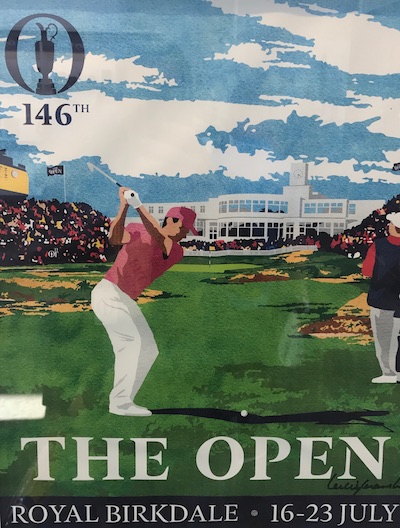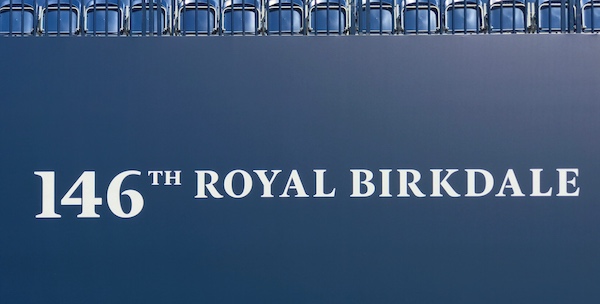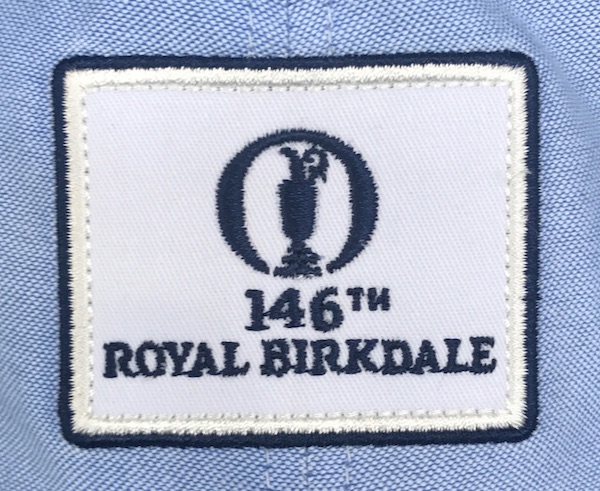Golf Channel Films unveils its next project – Summer of ’76 – Tuesday, July 18 at 9 p.m. ET and, if you've seen the promos, there is no shortage of 70s fun and funk. But that's a mere teaser for what is the most unusual and spunky production Golf Channel has put on the air.
 While the film centers around the Johnny-Seve duel at the 1976 Open, it's also a film about 70s. Narrated by actor Tim Matheson and co-produced by Israel DeHerrera, Golf Channel host Rich Lerner and James Ponti, it is written by Lerner who answered a few questions in advance of Open week and the film's Tuesday debut.
While the film centers around the Johnny-Seve duel at the 1976 Open, it's also a film about 70s. Narrated by actor Tim Matheson and co-produced by Israel DeHerrera, Golf Channel host Rich Lerner and James Ponti, it is written by Lerner who answered a few questions in advance of Open week and the film's Tuesday debut.
GS: You’re credited as a writer and co-producer with Israel DeHerrera on this, so tell us how this project came about and what inspired you to add more work to an already full slate as Golf Channel’s lead announcer?
RL: As part of our relationship with the R&A, we’re producing one documentary film each year. With The Open returning to Royal Birkdale, we began to look closely at 1976 because of the two principal characters, Johnny Miller and Seve Ballesteros, both charismatic and even transcendent figures. But what really excited me was the chance to explore the 1970s, with all those legendary tough guys with homemade swings, the cool style, wood and steel, and so the piece is as much about that period as it is the Open of 1976 and I think people are going to really enjoy it.
In terms of the additional work, it’s always a labor of love. Plus, I need projects to pass the time with all my travel! And Izzy DeHerrera, who’s dogged and brilliant, did a lot of the heavy lifting along with James Ponti and Max Miller. Also, I’d done long form specials years ago, like New York Stories, in which I followed five people, involved in some way in golf, who were impacted by the events of 9-11; Se Ri Pak, A Champion’s Journey; and an hour on the aftermath of Hurricane Katrina. In terms of storytelling, I wanted to get back to that sort of depth.
GS: How was the process of a film like this different than your day-to-day job covering live golf and did you enjoy it?
RL: It’s similar in some ways to doing a long feature story, though in this case you’re constructing six and trying to keep them connected over the course of one hour. We lay out a storyboard and get busy, knowing we’re going to do an entire segment on what the golf scene was like in the 1970s, another on Europe’s inferiority complex with Americans having dominated, another on Seve and who he was and where he came from, another on Johnny and just how ridiculously good he was at that time. The interviews were a blast, talking with Johnny and Peter Jacobsen and Roger Maltbie. That was their time, and they light up and get totally engaged when you take them back 40 years.
GS: The promos have some great footage and music for fans of the 70s, was part this to highlight the culture once lampooned and now better appreciated from an arts or sports perspective?
RL: Look, we all have the same reaction when we look at our old pictures from the ‘70s. What was I thinking? But that’s what it was, big hair and platform shoes and wide collars and Sansabelt slacks. I mean, even Jack Nicklaus, who came of age in the brush cut 1950s, let his hair down. People weren’t so buttoned up. In fact, they were showing chest hair! We try to capture the vibe in interviews with among others, Peter Frampton and one of my all-time favorites, Walt “Clyde” Frazier. And yes, it’s easy to poke fun at that decade but what also made it great was that it wasn’t so corporate. It was looser and boozier, with stiff shots on and off the course. Think too about how good it was musically with originals like David Bowie, The Allman Brothers, The Ohio Players and golf had plenty as well like Trevino, Floyd, Wadkins, Miller and of course, Seve. They don’t make ‘em like that anymore, do they? So yes, I do think people will come away with a renewed appreciation for that time, or at least smiling at the memories.
GS: What in particular are you most pleased with in how the final product came out?
RL: From the start, we approached this with the idea that we were in a Mustang with the top down and an eight track cranking tunes. Let’s just have some fun. And I think that’s what I’m most pleased about, that it’s a good time. Plus, it’s “golfy” in plenty of places. I love the Seve back story, coming as he did from a farm in Spain. And when Johnny explains that he actually mimicked several different swings from several other legends, it’s just a fantastic insight into the way high level performers approach their craft.
GS: The Open returns with a bit of chaos at the top of the sport, with seven straight first time major winners and a few who’ve already seem declines in their games immediately after winning. After putting this film together and exploring that generation, do you think we have the potential to enjoy a similar decade with a group of stars or do you sense the amount of money in the game will make careers shorter?
RL: Both Johnny and Tom Watson are adamant that the 10 best from the ‘70s would be tough to beat in a head-to-head against the 10 best from today. Why? Because you had to win back then to really earn. Guys knew how to close. Now, we all agree there’s far more depth of talent today.
But when you’re 23 years old with 7,000 square feet and an ocean view you might be inclined to say, “This is good enough.” That said, I do think today’s great young stars want it as badly as those from previous generations. And I also think about Arnold Palmer after he won The Open in 1961 at Royal Birkdale. He arrived back home in Latrobe to a big celebration. His father, Deke, said, “Congratulations son, now the back nine needs to be mowed.” Arnie put down the Claret Jug and hopped on the tractor at the club where he grew up. There comes a time when a man, no matter how rich and how famous, needs to get back to work.
The trailor:
 Though as David Owen noted in this piece, with accompanying image, the original design vision was pretty swell and needs restoration.
Though as David Owen noted in this piece, with accompanying image, the original design vision was pretty swell and needs restoration.



















